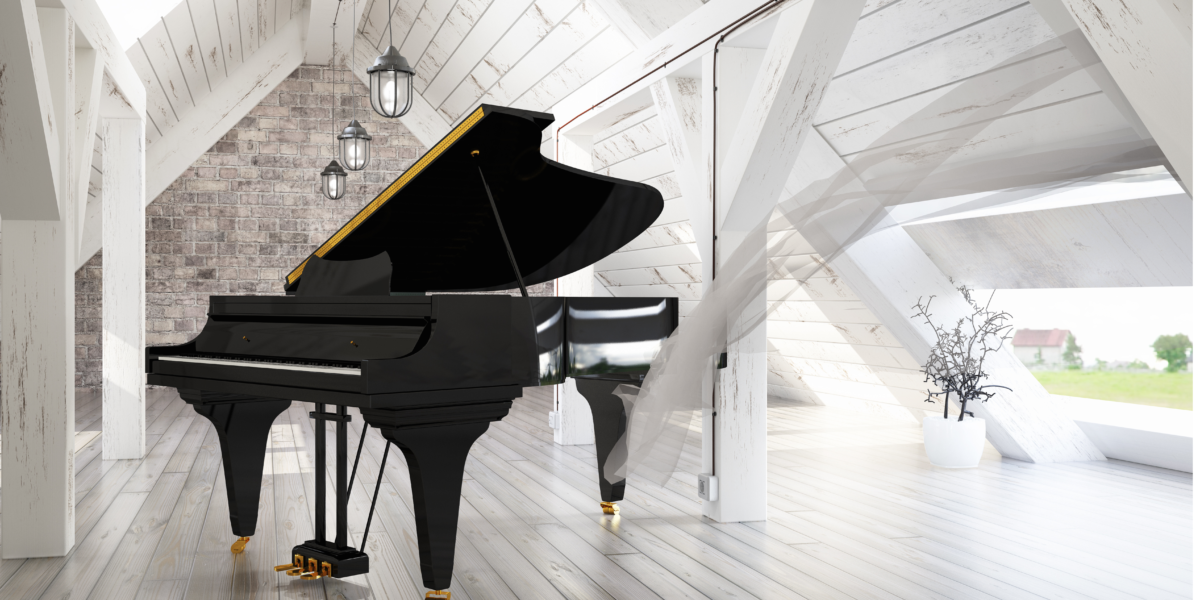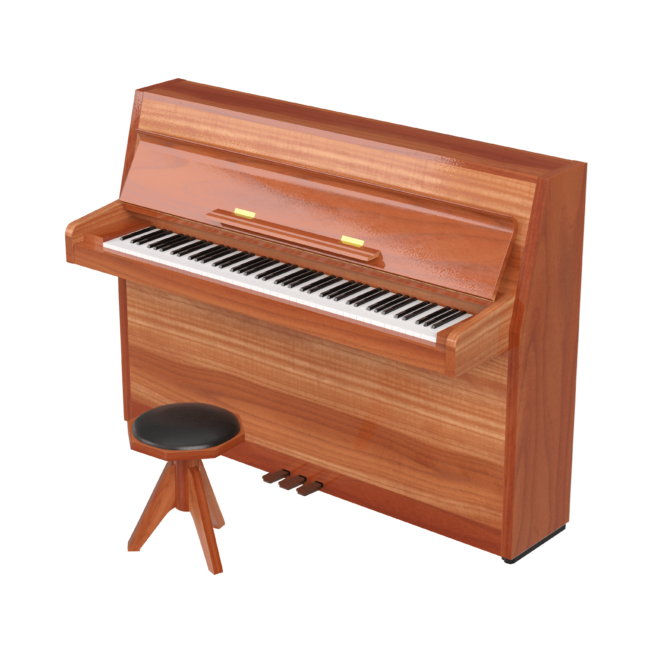Piano Sizes: From the Smallest to The Biggest

From the smallest to the biggest piano sizes in the world, here is a list of different kinds of pianos by size.
Pianos come in all shapes and sizes and generate different sounds–each offering pianists a unique playing experience. There are pros and cons to each type of piano design. However, they all cater to the needs of various musicians and environments.
So what dimensions do pianos come in?
This article provides the measurements and weight of all the acoustic piano sizes available today, from the smallest to the biggest.

Vertical Pianos.
Originally, pianos came in one shape. While the grand piano is elegant, it’s also huge and difficult to fit into the average home.
The design of vertical pianos makes them far more accessible for private use. Despite the dramatic change in shape, many of them sound fantastic! You can fit a full-sized soundboard and strings in the back of a cabinet piano.
While a large upright piano can rival some of its acoustic cousins in sound quality with smaller pianos, there is a trade-off between size and tone.
Spinet.
The spinet piano is the smallest acoustic piano. Production started in the 1930s. However, while they easily fit into the average home, their sound quality falls short. Because of the small case, the soundboard and string length was much smaller–in 1990, spinet production was discontinued.
Spinets have a height of about 38 inches, a width of around 58 inches, and weigh around 200-300 pounds.
Are you thinking of buying a spinet piano?
Our blog post, What You Should Know Before You Buy a Spinet Piano gives you a better idea of what to look for.
Console.
Console pianos are larger than spinets, ranging from 40 to around 43 inches in height, 58 inches wide, and weighing 350 to 450 pounds.
While they’re still compact, their sound quality is satisfactory for the average home user. Because of the console’s superior performance, manufacturers continue to make them today–tweaking the design to improve the sound quality further.
Studio.
Studio pianos are the smallest piano that has full-size action. They bring balance between sound quality and pragmatism. A studio piano fits perfectly into most modern homes. Their height is between 45 to 48 inches, a width of 58 inches, and weighing between 400 to 500 pounds.
Upright pianos.
Upright or cabinet pianos range from 50 to 60 inches, approximate width of 58 inches, and weigh between 500 and 800 pounds. Depending on the brand and quality of the cabinet piano, they can rival the grand piano. Manufacturers equip concert cabinet pianos with a string length equivalent to a concert grand piano–giving it beautiful sound quality.

Horizontal pianos.
The most iconic pianos are the grand pianos. All the greats, from Beethoven to Chopin, would perform using these majestic instruments.
No other piano projects sound like a grand piano. Because the top of the case opens, it helps project the sound more effectively. While some cabinet pianos can hang with lower-tier grand pianos, the sounds of the best grand pianos are second to none.
However, with great sound, there is a need for more space. While the grand pianos look and sound amazing, having one in your home is inconvenient.
Petite grand
Despite their size, people still want them in their homes. That’s where the petite grand (the smallest of the grand pianos) comes in. Because of their smaller size, they don’t produce as much volume or force as larger grands.
They range from about 4 feet and 5 inches to 4 feet and 11 inches tall and weigh anywhere between 400 to 500 pounds.
Baby grand
A step up from petites, baby grand pianos are from 4 feet and 6 inches up to 5 feet and 3 inches in length and weigh approximately 550 pounds. Similarly, we make baby grands fit into the average home while maintaining elegant design and powerful sounds.
Medium grand
We approach the middle of the size spectrum of grand pianos with the medium grand piano. It’s the smallest’ full-size’ category of the grand piano. The length of a medium grand is 5 feet and 5 inches to 6 feet and 3 inches in length and weighs around 600 pounds.
Parlor grand
The parlor grand piano (or just grand piano) stands at 5 feet 9 inches to 6 feet in height and weighs about 750 pounds.
Ballroom grand
The ballroom or semi-concert grand is typically between 6 feet 5 inches and 7 feet 4 inches in length, 58 to 60 inches wide, and weighs about 900 pounds.
Concert grand
Lastly, the concert grand is the largest acoustic piano. Starting from 7 feet and 4 inches, going up to 9 feet and 6 inches in length, they can be up to 9 feet tall and weigh approximately 900 to 1200 pounds.
What’s also interesting is that some brands make unique concert grands with more than just 88 keys. For instance, Stuart & Sons released the first piano with a keyboard that contains 9 octaves (108 keys)!
The are countless piano sizes. Each of them brings something unique to the musical table. Of course, each also has its drawbacks.
In the case of the spinet, while they are convenient and fit nicely into most homes because they’re so small, the sounds are lower quality. On the other hand, a concert piano is second to none in terms of aesthetics and performance. However, fitting one in your home can be a total nightmare.
Just like piano sizes, there are plenty of piano apps available today. Similarly, some are better at specific lessons than others and cater to various people. Simply Piano by JoyTunes is the perfect app to help you learn the piano–whether you’re using it to supplement your lessons or as your sole source for learning.









